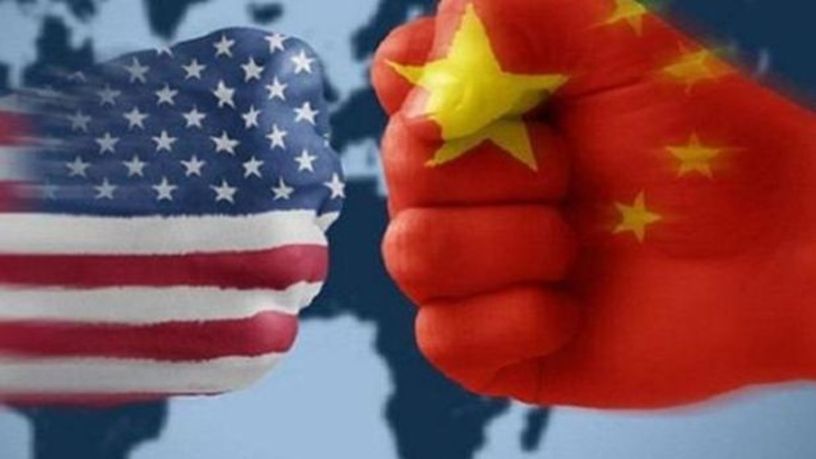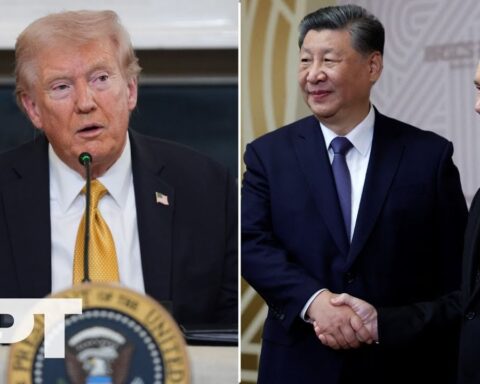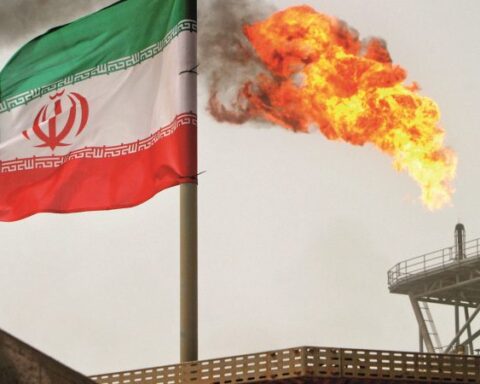Beijing’s Plans to Exploit American Retreat
Agreat unanswered question of the second Trump administration has been how its outright rejection of the existing global order would affect China’s international strategy. U.S. Secretary of State Marco Rubio has called this order both “obsolete” and “a weapon being used against” the United States, and in his speech at the United Nations on September 23, President Donald Trump pilloried the “globalist” institution for “creating new problems for us to solve.” In the early months of this year, Beijing’s response to Washington’s attacks on the international order seemed mostly cautious and measured. China traded tit-for-tat tariffs with the United States, but it otherwise remained content to sit back and accrue benefits from Trump’s alienation of U.S. allies and withdrawal from international institutions.
That period of caution is now over. Beijing has decided on a much more ambitious course, putting its plans on vivid display at a September meeting of the Shanghai Cooperation Organization. Hosting the once sleepy regional economic and security body, Chinese leader Xi Jinping clasped hands with Russian President Vladimir Putin and Indian Prime Minister Narendra Modi and met with 18 other leaders from across the Eurasian continent. A few days later, flanked by Putin and North Korean leader Kim Jong Un, Xi presided over a massive military parade in Beijing to show off China’s fast-growing arsenal. Trump’s comment about seeing the summitry on TV—“They were hoping I was watching, and I was watching”—inadvertently revealed the precise position in which China hoped to place the United States: the American president, so often the prime mover of global politics, had become a spectator on the sidelines of a changing world.
Xi aims to establish China as the fulcrum of an emerging multipolar world, and he is advancing a new, more active diplomatic strategy to realize that goal. Rather than force the United States out of its leading position in the international system or overturn the existing order, China is exploiting Trump’s rapid, willing abdication of Washington’s role. And China is building up its own power and prestige within existing institutions, seeking to shift their centers of gravity irrevocably toward Beijing. If this gambit succeeds, it will transform the international order from the inside out, placing China at center stage and undermining U.S. influence in ways that future American administrations may find difficult to reverse.
Wolrd Building
Not too long ago, foreign policy analysts might have shrugged off the pageantry of the China summit. After all, meetings of the Shanghai Cooperation Organization are often heavy on optics and light on substance. Disagreements among the group’s key members, such as a long-running border dispute between China and India, have tended to outweigh their areas of commonality. Indeed, some commentators and U.S. officials dismissed the recent Chinese-hosted events as “performative,” “for show,” and merely a “photo op.”
Eight months into Trump’s second term, this reading is optimistic at best. It discounts the extent to which global reactions to Trump’s actions are reshaping the world. The international order that the United States built and maintained for decades is coming to an end, and what follows is up for grabs. Many countries are competing for influence, and short-term, transactional dealmaking rather than long-term cooperation is becoming the new norm, ushering in a phase that one of us called “mercenary multipolarity” in Foreign Affairs. The United States and China remain the two most powerful countries, but others, such as India and Russia, as well as the European Union, are significant players with their own agendas. And as U.S. alliances fracture under Trump, rivals of the United States are collaborating in increasingly meaningful ways.
Yet with the ultimate shape of this new order still undefined, Xi sees a window of opportunity to forge a China-centric world without directly taking on the United States by moving assertively into areas where Trump’s “America first” policies leave openings. This project extends well beyond the optics of gathering global leaders in Chinese cities. While the U.S. president feuded with the leaders of Brazil and India, Xi addressed a virtual BRICS meeting hosted by Brasilia on the topic of “resisting protectionism” and welcomed Modi to China to shore up ties with these two key powers. While Trump imposes tariffs on much of the world and eliminates U.S. foreign assistance, Xi is courting the leaders of the developing world: Beijing announced cuts to Chinese tariffs on African goods in June and claimed in September that it would bolster efforts to reform the World Trade Organization to benefit developing countries’ economic growth. While the Trump administration embraced unabashed technology nationalism, titling its AI action plan “Winning the Race,” China hosted its annual World Artificial Intelligence Conference under the headline “Global Solidarity in the AI Era,” claiming that Beijing wants to share the benefits of AI and announcing a new global AI governance project to do so. And whereas Trump attacked climate change as “the greatest con job ever” and skipped a UN summit on the issue, Xi has set an emissions reduction goal that, although remarkably unambitious, has earned him plaudits in some quarters. The list goes on.
Perhaps most worryingly for Washington, Xi’s actions have made clear that this China-centric world will reward resistance to the United States. There is no better symbol of this promise than Xi’s decision to give pride of place during the military parade in Beijing to North Korean leader Kim Jong Un, whose country has been under punishing sanctions for decades and has sent troops to fight in Russia’s war against Ukraine. Xi similarly embraced other leaders who have pushed back against the United States in some way: Putin, Modi, and Iranian President Masoud Pezeshkian all received a lavish welcome in China, too.
China is now focused on being seen not as a disrupter but as the defender of the international order, putting a new spin on its long-standing effort to secure a privileged position in existing institutions and to boost its capacity to set norms and rules inside them. Until recently, China preferred the safer course of criticizing unpopular U.S. policies and focusing its activities in areas that attract limited international attention, such as development, culture, and peacekeeping. But with a combative Trump questioning the very purpose of the UN at his speech before the General Assembly, Beijing has an international audience that may be more receptive to its overtures. “China has all along acted as a staunch defender of world peace and security,” Chinese Premier Li Qiang said at the UN just a few days after Trump’s speech.
In September, Xi announced his Global Governance Initiative, which aims to put China’s stamp on the United Nations system. It invokes the desire of many countries for a more “just and equitable” international order and makes China—rather than any other country or international body—the arbiter of what that new order will entail. Beijing is already advancing principles that work in its favor, such as an absolutist but selective conception of national sovereignty that it applies to itself but not to all countries, and marginalizing values that it sees as threatening, such as universal human rights. China has offered few details about how it would resolve disputes within or introduce reforms to international institutions, and it has no desire to foot more of the bill for costly UN programs. But given the disdain that the Trump administration has showed toward the UN, countries that are committed to the UN system may well accede to China’s entreaties to support its new initiative and its positions on a variety of substantive issues. Paired with prominent if modest Chinese investments in UN bodies and their personnel, Trump’s continued neglect, Xi hopes, will enable China to reshape these institutions to its liking.
As with the Shanghai Cooperation Organization, analysts might once have rolled their eyes at the Global Governance Initiative as mere sloganeering. But it is one of a set of projects—including the Global Development Initiative, the Global Civilization Initiative, and the Global Security Initiative—that Chinese officials are working intently to translate into reality. The scholars Sheena Chestnut Greitens, Isaac Kardon, and Cameron Waltz recently found, for instance, that China’s internal security agencies have significantly increased their international policing partnerships and nonmilitary security cooperation under the banner of the Global Security Initiative, especially in Southeast Asia, Central Asia, and the Pacific Islands but also in Africa and Latin America. As the United States steps back, China is quietly layering new kinds of partnerships on top of its already robust trade ties, with the aim that, over time, more countries will see Beijing—not Washington—as their most important relationship.
Bumps In The Road
It is unrealistic to expect the Trump administration to suddenly change its approach to diplomacy and multilateralism or to see the wisdom of embracing allies and competing with China for influence at the UN. Such steps would have support among the American people, a strong majority of whom think that U.S. alliances benefit the United States and that the UN plays a necessary, if imperfect, role in the world. But these moves would simply be too much at odds with the administration’s “America first” ideology to gain traction. For the next few years, therefore, the United States is likely to leave China with an open field in international institutions.
Xi’s efforts may build additional momentum thanks to Trump’s approach to diplomacy with Beijing. Ahead of his planned visit to China in 2026, Trump is focused on the optics of his personal relationship with Xi and on striking a bilateral deal—which, if prior negotiations are any guide, much of the world may judge as a good deal for China, even if Trump touts it as a win. Other countries are watching these negotiations closely, and any agreement that appears to reward China’s resistance to U.S. demands will further entrench the view that China is gaining influence relative to the United States.
But China’s success is not a foregone conclusion. Beijing may struggle to translate its grand aspirations into a real global realignment. Many countries understand that a China-centric world would come with strings attached, and Beijing may be unable to resist escalating its numerous territorial disputes in Asia or flexing its coercive capabilities. Time and again over the past decade, Beijing’s actions—from punitive economic measures against major trading partners to maritime harassment of rival territorial claimants in the South China Sea—have invited pushback from countries that prize their autonomy. Now, those countries could resist China’s order-shaping efforts by reducing their reliance on both Beijing and Washington. A more fragmented, anarchic world is not necessarily one that China will dominate.
Missteps by China or resistance from other countries could well thwart Xi’s designs. For the United States, such setbacks can buy time—until different leadership in Washington once again has a vision of the future built around more than looking out for itself.
Source: https://www.foreignaffairs.com/united-states/china-goes-offense






